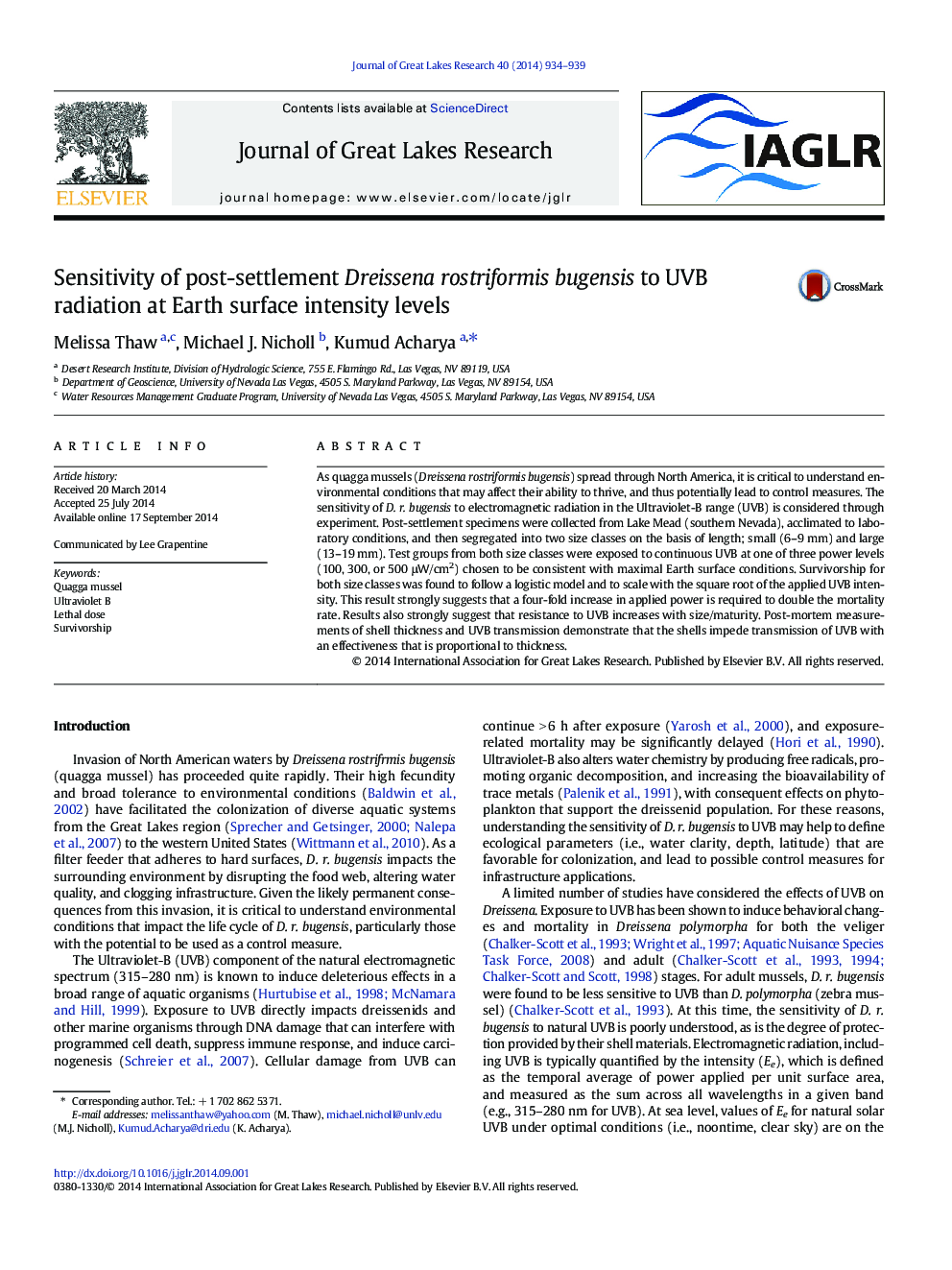| Article ID | Journal | Published Year | Pages | File Type |
|---|---|---|---|---|
| 6305088 | Journal of Great Lakes Research | 2014 | 6 Pages |
Abstract
As quagga mussels (Dreissena rostriformis bugensis) spread through North America, it is critical to understand environmental conditions that may affect their ability to thrive, and thus potentially lead to control measures. The sensitivity of D. r. bugensis to electromagnetic radiation in the Ultraviolet-B range (UVB) is considered through experiment. Post-settlement specimens were collected from Lake Mead (southern Nevada), acclimated to laboratory conditions, and then segregated into two size classes on the basis of length; small (6-9 mm) and large (13-19 mm). Test groups from both size classes were exposed to continuous UVB at one of three power levels (100, 300, or 500 μW/cm2) chosen to be consistent with maximal Earth surface conditions. Survivorship for both size classes was found to follow a logistic model and to scale with the square root of the applied UVB intensity. This result strongly suggests that a four-fold increase in applied power is required to double the mortality rate. Results also strongly suggest that resistance to UVB increases with size/maturity. Post-mortem measurements of shell thickness and UVB transmission demonstrate that the shells impede transmission of UVB with an effectiveness that is proportional to thickness.
Related Topics
Physical Sciences and Engineering
Earth and Planetary Sciences
Earth and Planetary Sciences (General)
Authors
Melissa Thaw, Michael J. Nicholl, Kumud Acharya,
